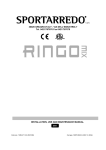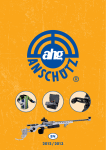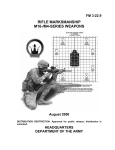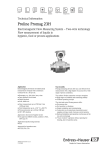Download Our Carbine User Manual
Transcript
Wilson Combaf AR Style Tactical Carbine Operation and Maintenance Manual WARNING • Every gun is ALWAYS loaded! • NEVER let the muzzle cover anything which you are not willing to destroy! • Keep your finger OFF the trigger till your sights are ON THE TARGET! • ALWAYS be sure of your target! Operation: Safety The carbine is equipped with a manual thumb operated safety that is located on the left side of the lower receiver. When the safety is in the "safe" position (figure #1) the trigger action is blocked and the carbine will not fire. Note: The trigger pull adjustment on models with JP trigger groups can be damaged if you try to force the thumb safety to the "safe" position with the hammer in the forward (fired) position. To fire the carbine flip the safety lever down and forward to the "fire" position (figure #2). Bolt Stop The carbine is equipped with a bolt stop (figure #3) which locks the bolt to the rear after the last shot in the magazine has been fired (figure #4). The bolt stop can be engaged in three ways. #1 by firing the last shot in the magazine; #2 by manually retracting the bolt with an empty magazine in the weapon; #3 by manually retracting the bolt and pushing the bottom of the bolt stop (figure #5). The bolt stop is released (which allows the bolt to close) by depressing the serrated oval pad at the top of the bolt release (figure #6). Magazine Catch The carbine is equipped with a magazine catch (figure #7) which locks in place or releases the carbines box magazine feeding device. To lock a magazine into the lower receiver, simply insert a magazine into the magazine well of the lower receiver (figure #8). To release a magazine from the carbine, depress the magazine release with your index finger (figure #9). Ejection Port Cover The carbine is equipped with an ejection port cover (figure #10 & #11) to keep debris out of the action when the carbine is not being fired. The ejection port cover can be closed with the bolt in either the open or closed position and will snap open when the bolt is either opened or closed. Collapsible Butt Stock The carbine may be fitted with a 6 position collapsible butt stock (figure #12). To close or retract — the stock, depress the lock lever and slide the rear portion of the stock in or out. Releasing the lock lever will allow the stock to lock in any of the 6 length posi tions. Fig. 12 Charging Handle The carbine is equipped with a charging handle (figure #13) to retract the bolt carrier assembly and load and un-load the car bine. To retract the bolt, depress the charging handle latch on the left front of the charging handle and retract to the rear (fig ure #14). To close the bolt, simply release the charging handle and allow the bolt carrier assembly/charging handle to move forward. Fig. 14 Loading the Carbine CAUTION: Make sure the carbine is pointed in a safe direction, your finger is "off' the trigger and the thumb safety is in the "safe" position. The carbine can be loaded with the bolt in either the open or closed position. To load with the bolt open, insert a loaded magazine (figure #15) into the lower receiver and make sure it locks into place by pulling down on it. Release the bolt stop with either your left hand thumb or the open palm of your left hand. To load with the bolt closed, insert a loaded maga zine (figure #15) and make sure it is locked into place. Retract the charging handle fully to the rear and release then pull on the right rear of the charging handle to make sure it is locked. Fig. 15 Firing the Carbine CAUTION: Make sure the car bine is pointed in a safe direc tion, your finger is "off' the trig ger and the thumb safety is in the "safe" position. ALWAYS use eye and ear protection. Shoulder the carbine, align the sights, flip safety to the "fire" position and press the trigger (figure #16). ig. 16 Unloading the Carbine CAUTION: Make sure the carbine is pointed in a safe direction, your finger is "off' the trigger and the thumb safety is in the "safe" position. Remove the magazine (figure #17), retract the charging handle fully to the rear (figure #18) and manually lock the bolt open (fig ure #19). Visually inspect the chamber to make sure the car bine is empty. Fig. 19 Accuracy Guarantee/Recommended Ammunition: 1 MOA or 2 MOA accuracy guarantees are based on the rifles ability to place 3 consecutive shots (center to center) into the guaranteed group size from a distance of 100 yards by at least one of the following ammunition types. This is based on an experienced shooter using a 10x or higher power optic, shoot ing from a double sandbag benchrest on a calm day. Federal Gold Metal 69gr HPBT Match Federal Premium 55gr HPBT Match Winchester 53gr HP Hornady 55gr V-Max Hornady 53gr HP Match Black Hills 52gr BTHP Match Black Hills 68gr BTHP Match Black Hills 69gr HPBT Match Remington 62gr HP Match Handloads: 24.5gr AA2460, 69gr Sierra HPBT Match* or 68gr Hornady BTHP 24.5gr Win 748, 69gr Sierra HPBT Match or 68gr Hornady BTHP 26gr Win 748, 52gr Hornady BTHP Match* For CQB training ammunition we recommend the Federal American Eagle 55gr FMJ load. * We have found these two loads to be extremely accurate in our carbines. NOTE: Your Wilson Combat® carbine is a high quality precision product, please DO NOT feed it cheap Russian or Chinese ammunition. In addition we have found some of this "non-corro sive" ammunition to be mildly corrosive and will damage your carbine if it is not cleaned promptly after use. Maintenance: Field Stripping for Normal Cleaning CAUTION: Make sure the carbine is un-loaded &magazine is removed. Close the bolt. Push the rear take down pin (figure #20) from left to right until it stops (the rear take down pin may fit so tightly in some carbines that a punch and hammer is needed to move it). Pivot the upper and lower receiver apart (figure #21). Retract the charging handle and bolt carrier assembly about 1/2 way to the rear. Remove the bolt carrier assembly (figure #22). Retract the charging handle to the rear until it stops (figure #23), then push it downward and remove from the upper receiver. Fig. 23 This is all the dis-assembly that is required for a normal field cleaning/re-lube. For a thorough cleaning, you will need to dis-assemble the bolt carrier assembly. 1. 2. 3. 4. 5. Remove the firing pin retaining pin at the left/center of the bolt carrier (figure #24). Remove the firing pin (figure #25). Depress the bolt head fully to the rear, turn the cam pin 90° and remove (figure #26). The bolt head can now be removed by pulling it out of the front of the bolt carrier (figure #27). Push the extractor pin in on the right of bolt (figure #28) and pull extractor pin out on the left of the bolt, and then remove the extractor from the bolt (figure #29). Fig. 26 Fig. 28 ••••••••I Fig. 27 Fig. 29 Thoroughly clean exterior surface of all components and the interior of the bolt carrier, upper receiver, chamber and bore. Recommended bore cleaning procedure: 1. Run a tight fitting patch saturated with Butch's Bore Shine Solvent through the bore. 2. Allow bore to soak for 5 - 15 minutes. 3. Run a .22 caliber bronze bore brush through the bore six times (the use of a bore guide is recommended). Run a tight fitting patch saturated with Butch's Bore Shine Solvent through the bore. Run tight fitting dry patches through the bore until 4. 5. patches come out clean. 6. If carbine is not going to be put into immediate use, run a patch saturated with good, quality gun oil through the bore. See figure #30 thru figure #33. Fig. 33 IMPORTANT NOTE PRIOR TO LUBRICATION/RE-ASSEMBLY, MAKE SURE THE GAPS IN THE THREE GAS RINGS ON THE BOLT ARE SPACED A MINIMUM OF 1/8" APART, SPACING AT 2, 6,10 O'CLOCK IS IDEAL (See figure #34 below). LUBRICATION POINTS: Bolt • • • • Gas rings (figure #34 & figure #35) Bearing band (figure #36) Rear shank (figure #37) Rear of locking lugs (figure #38) Fig. 37 Fig. 38 Bolt Carrier Assembly • • • • Cam pin (figure #39) Carrier contact rails (4) (figure #40) Each side of key (figure #41) Firing Pin (figure #42) Fig. 39 Fig. 41 Lightly lube the bearing surface of the charging handle. Recommended lubricant is Wilson Combat® Ultima-Lube™ Universal on all bearing surfaces, except for the inside of the bolt carrier/outside of bolt head (figure #39), where we recom mend Break-Free LP to minimize carbon deposit build-up. Recommended bore solvent is Butch's Bore Shine. Re-assemble in reverse order Magazines The magazine is one of the most critical components of the ARstyle system. The best quality carbines, using the best quality ammunition will NOT function reliably with poor quality maga zines. We recommend the use of genuine US Gl contract alu minum or H&K steel magazines only. We have found the 20 round US Gl and H&K 30 round magazines to be the most reli able. Earlier production Colt magazines were of high quality, but we have had problems with current production units. We do not recommend the use of steel aftermarket magazines such as the ProMag or USA brands. NOTE: To assure optimum reliability all 20 and 30 round maga zines should be downloaded by two (2) rounds (18 or 28 rounds respectively). Cleaning the magazine 1) Remove all ammunition from magazine 2) Use a small screwdriver or punch to pry the base plate away from the body (figure #43) 3) Push the base plate rearward slowly and carefully (figure #44) WARNING Be ready to control the spring as the base plate is removed. 4) Remove the spring and follower from the magazine (figure #45). 5) Clean all the components before wiping them with a lightly oiled cloth. 6) Wipe dry with dry cloth. Re-assemble in reverse order Manufacturer recommended Maintenance Schedule For the Wilson Combat® AR Style Tactical Carbines Definitions: Normal Use: Shooting the tactical rifle in regular weather con ditions and temperature ranges with jacketed factory ammuni tion, such as M855 Ball, allowing the rifle barrel to cool properly after rapid fire shots. Normal use can be further defined as fir ing 1000 rounds of ammunition over the course of a calendar year in at least 4 different shooting sessions. Heavy Use: Shooting the tactical rifle in Adverse Environmental Conditions or with Special Ammunition. Prolonged rapid fire shooting drills and some types of CQB training are also considered heavy use. Adverse Environmental Conditions: Extremely hot, cold, humid or wet weather conditions. Inspection: Examining the rifle component described to evalu ate it for signs of wear, misuse or breakage. Magazine: Critical part of the cartridge feeding system that must be maintained just like the carbine. Special Ammunition: Ammunition designed for special appli cations. Some special ammunition's are Simunitions, tracers, incendiary, etc. Field Clean: Wipe clean critical parts such as bolt carrier and bolt face. Clean inside of upper receiver, chamber and barrel. Detail Clean: Complete field strip, degrease and clean all parts specified and clean chamber & barrel of entire weapon. Inspect parts for abnormal wear or breakage. Recommended Maintenance Schedule: Normal Use and Regular Ammunition Number of rounds Field Clean & Detail Clean & Fired Re-lubricate Re-lubricate Weapon Weapon 200 Inspect Weapon Magazines X X X X 500 Field Strip & Magazines Heavy Usage and Special Environmental Conditions • These recommendations are meant as guidelines only. Before using your Tactical Carbine with Special Ammunition or in Adverse Environmental Conditions, you should inspect the weapon carefully after every 50 rounds to establish ideal main tenance intervals for your specific conditions. Number of rounds Re-lubricate Detail Clean & Fired Weapon Re-lubricate Inspect Weapon Magazines Field Strip & Magazines Weapon 100 X 150 X 200 X X X Part Replacement Schedule: Part Name: Replace After: Extractor 10,000 rounds Extractor Spring & O-ring 5,000 rounds Bolt Cam Pin 10,000 rounds Bolt Head 15,000 rounds Magazine Assembly 1,500 rds per mag. or damage evident j NOTE: All cleaning and maintenance supplies mentioned in this manual are available from Brownell's, phone # (641) 623-5401. Wilson Combat® On Your Side® 2234 CR 719 Berryville, AR 72616-4573 1-800-955-4856 www.wilsoncombat.com • [email protected] Copyright © 2005/2006















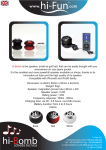
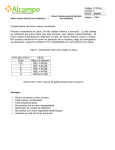
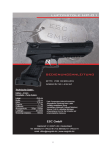



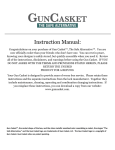
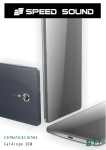



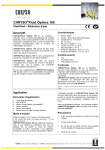


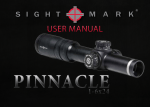
![2013 Gun List internet copy[2]](http://vs1.manualzilla.com/store/data/005851443_1-16b4e1bd3fc391c408d2005c48a2e336-150x150.png)
